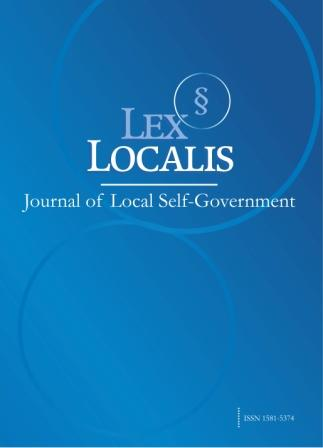A Study of the Effect of Translation Competence on College Students' Barriers to English Education Based on Intelligentsia Analysis
DOI:
https://doi.org/10.52152/800084Keywords:
structural equation modeling; multiple linear regression modeling; intelligentsia; barriers to English language educationAbstract
In the current process of university English teaching, it is found that English learning barriers have become a key factor restricting the quality of university English education. In order to investigate the influence of translation ability on college students' English education barriers, a research program on the relationship between the role of translation ability and college students' English education barriers based on the analysis of intelligibles was developed. With the support of scales, questionnaires, structural equation modeling, and multiple linear regression modeling, the research program of this paper is empirically analyzed. The regression coefficients of autonomy, intelligence, and interactivity in the intelligent body analysis, translation ability and college students' English education barriers are -0.389 (0.001), -0.179 (0.005), and -0.129 (0.009), while the path coefficients are 0.473, 0.385, and 0.469, and the two have a significant negative correlation, i.e., the higher the translation ability corresponds to the college students' English education barriers are smaller.
References
Banditvilai, C., & Cullen, R. (2018). Problems and Obstacles in Learning English as a Foreign. International Journal of Social Science and Humanity, 8(12), 289-293.
Yu, Q., & Yang, M. (2022). PSYCHOLOGICAL DISORDER PERFORMANCE AND CAUSES AND COUNTERMEASURES OF ENGLISH LEARNING FOR STRUGGLING STUDENTS IN COLLEGES AND UNIVERSITIES. Psychiatria Danubina, 34(suppl 5), 457-457.
Salgado, R. M., Koike, P. S., Maglasang, R., & Minoza, J. (2024). Overcoming Linguistic and Cultural Barriers in English Language Learning: An Exploration of Culturally Responsive Pedagogy. The English Teacher, 53(2).
Wei, Z. (2020). College English teaching and the development of translation ability: An investigation based on English translation teaching. In International Conference on Educational Training and Educational Phenomena (Vol. 10).
Ge, S. (2021). Application of translation workshop to college English translation teaching. International Journal of Emerging Trends in Social Sciences, 10(1), 34-40.
Li, D. (2024). The Comprehensive Training Effect of Translation Ability of College English Majors Based on Machine Learning. Journal of Combinatorial Mathematics and Combinatorial Computing, 120, 399-410.
Fitria, T. N. (2021). A review of machine translation tools: The translation’s ability. Language Circle: Journal of Language and Literature, 16(1), 162-176.
Maximilian, A., & Scholar, I. P. D. (2020). Translation ability, reading habit, and reading skill in vocational school students in Indonesia: A correlation. JETA: Journal of English Teaching and Applied Linguistic, 1(1).
Elenein, A. H. (2019). A. The State of Learning Translation among English Majors of Al-Quds Open University: Obstacles and Solutions. International Journal of Research in Educational Sciences.(IJRES), 2(1), 233-266.
Dev, S., & Qiqieh, S. (2016). The relationship between English language proficiency, academic achievement and self-esteem of non-native-English-speaking students. International Education Studies, 9(5), 147-155.
Botezatu, M. R., Guo, T., Kroll, J. F., Peterson, S., & Garcia, D. L. (2022). Sources of variation in second and native language speaking proficiency among college-aged second language learners. Studies in Second Language Acquisition, 44(2), 305-330.
Zhiyuan, L. I. N. (2017). English and Chinese Thought Patterns and Their Impact on Translation Teaching. Studies in Literature and Language, 14(4), 27-31.
Sebin Choi & Sungmin Yoon. (2025). AI Agent-Based Intelligent Urban Digital Twin (I-UDT): Concept, Methodology, and Case Studies. Smart Cities,8(1),28-28.
Impson F.A.C.,Kleinjan C.A.,Hoffmann J.H. & Mudavanhu P. (2021). A Review of Research and Developments with Insect Agents Used for Biological Control of Australian Acacia Species (Caesalpinioideae) in South Africa. African Entomology,29(3),693-712.
Salman Asshabi,Mojgan Rashtchi & Massood Siyyari. (2023). The Development of a Reflective Language Learning Model: A Structural Equation Modeling Approach. Journal of Language and Education,9(4),11-30.
Sodini Mirko,Astolfi Stefania,Francini Alessandra & Sebastiani Luca. (2021). Multiple linear regression and linear mixed models identify novel traits of salinity tolerance in Olea europaea L. Tree physiology,42(5),1029-1042.
Downloads
Published
Issue
Section
License
Copyright (c) 2025 Lex localis - Journal of Local Self-Government

This work is licensed under a Creative Commons Attribution-NonCommercial-NoDerivatives 4.0 International License.








